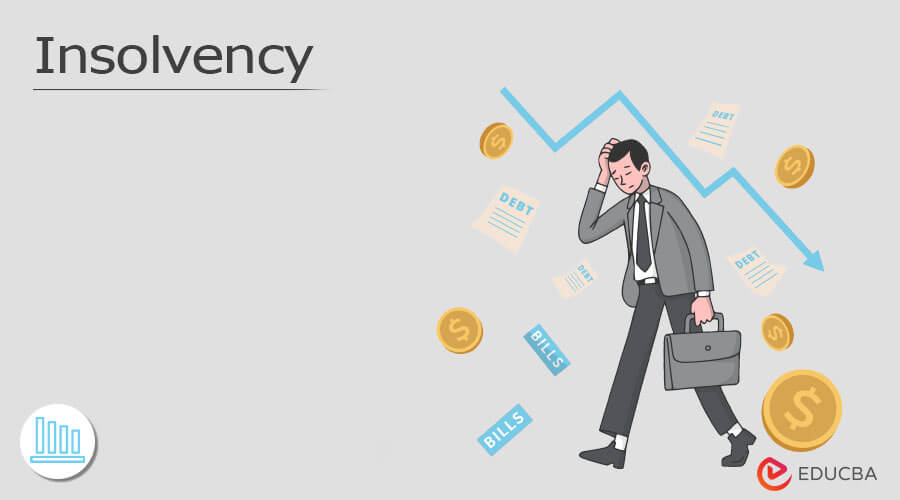The Best Strategy To Use For Insolvency Practitioner
Wiki Article
The smart Trick of Insolvency Practitioner That Nobody is Talking About
Table of ContentsWhat Does Insolvency Practitioner Mean?How Insolvency Practitioner can Save You Time, Stress, and Money.Excitement About Insolvency PractitionerInsolvency Practitioner for DummiesThe Single Strategy To Use For Insolvency PractitionerThe smart Trick of Insolvency Practitioner That Nobody is Talking About5 Simple Techniques For Insolvency Practitioner
Insolvency is when obligations are higher than the value of the business, or when a debtor can not pay the financial obligations they owe. A business can become bankrupt due to a number of situations that bring about inadequate cash money flow. When encountered with bankruptcy, a service or person can get in touch with financial institutions straight and restructure debts to pay them off.
Bankruptcy can result in insolvency proceedings, in which lawsuit will certainly be taken versus the financially troubled individual or entity, and possessions. Insolvency Practitioner may be liquidated to repay superior financial debts. Local business owner may call financial institutions straight and restructure financial debts into more convenient installments. Creditors are usually open to this approach due to the fact that they wish to be paid off and stay clear of losses, even if the repayment is on a postponed timetable.
The owner produces a proposition describing exactly how the financial obligation might be reorganized using cost decreases or other prepare for support. The proposition reveals financial institutions how the service might generate adequate capital for rewarding procedures while paying its financial debts. Generally, a forgiven financial obligation may be considered income by the Irs (INTERNAL REVENUE SERVICE).
The smart Trick of Insolvency Practitioner That Nobody is Talking About
When an organization needs to pay increased costs for products and services, the firm passes along the cost to the consumer. As opposed to pay the enhanced expense, numerous customers take their organization somewhere else so they can pay less for a services or product. Shedding clients results in shedding income for paying the company's creditors.When operations discontinue, so does the business's revenue. Some companies come to be insolvent due to the fact that their goods or solutions do not progress to fit customers' transforming demands.
About Insolvency Practitioner
Costs go beyond profits and expenses stay unsettled. Types of insolvency include cash-flow insolvency and balance-sheet bankruptcy. Cash-flow bankruptcy occurs when a firm has the properties to cover their financial obligations but they are in the wrong form, such as property rather than liquid funds. Balance-sheet bankruptcy, on the various other hand, shows a lack of properties in any form to cover debts.The IRS states that an individual is insolvent when the overall obligations go beyond complete assets. Insolvency Practitioner. A insolvency, on the other hand, is an actual court order that depicts exactly how a bankrupt person or company will certainly settle their financial institutions, or how they will offer their possessions in order to make the repayments
The Main Principles Of Insolvency Practitioner
If that circumstance expands longer than expected, it can lead to personal bankruptcy. When a company or person is bankrupt, they can not meet their monetary obligations. Solvency is when you have adequate funds to cover the repayments you owe. A firm is considered solvent when they have more possessions than responsibilities.Recognizing the aspects that can lead to insolvency, such as overspending, can assist you prevent bankruptcy and its effects.
A Biased View of Insolvency Practitioner
It is well known that supervisors and policemans of firms (and supervisors of limited liability business) owe fiduciary responsibilities to their organizations and their investors (or participants). These fiduciary commitments are specified by state statutes and, though there are variants from one state to another, they generally consist of a duty of commitment and a duty of treatment.The duty of care requires directors and officers to exercise diligence, to make informed choices, and to act in excellent faith her response to ensure that their actions remain in the ideal passion of the company. Though this contact form beyond the scope of this discussion, some states allow these tasks to be restricted either by so noting in the organizational files or adhering to other requirements.
The smart Trick of Insolvency Practitioner That Nobody is Talking About

Take care about giving shareholders favoritism at the cost of creditors (e.g., authorizing and moneying a dividend or a stock redemption). Take care about favoritism in between classes of investors. Clear up efforts to find out all the facts here are the findings prior to taking a specific strategy; directors need to genuinely believe that any decisions made remain in the very best interests of the company in its whole (i.e., decisions will be examined in hindsight because of the result of such actions on the firm).
In any kind of personal bankruptcy or bankruptcy proceeding, settlements made to certain financial institutions at the expense of various other financial institutions can be clawed back, particularly if there is some connection between the company and the lender. Think about recommending at a yearly investor conference (or any type of other conference of stockholders) a resolution attesting that all prior service decisions and activities taken by the directors and police officers of the corporation were taken in good confidence after an exercise of affordable treatment.
Some Known Facts About Insolvency Practitioner.
Fully disclose any type of personal or company relationships with parties beyond of purchases entailing the company to avoid the appearance of a conflict of interest. In reviewing potential fund raising deals or a sale of assets of the distressed corporation, understand that these purchases might be looked at later on taking into account any type of subsequent development of supervisors' fiduciary obligations to consist of financial institutions.Report this wiki page